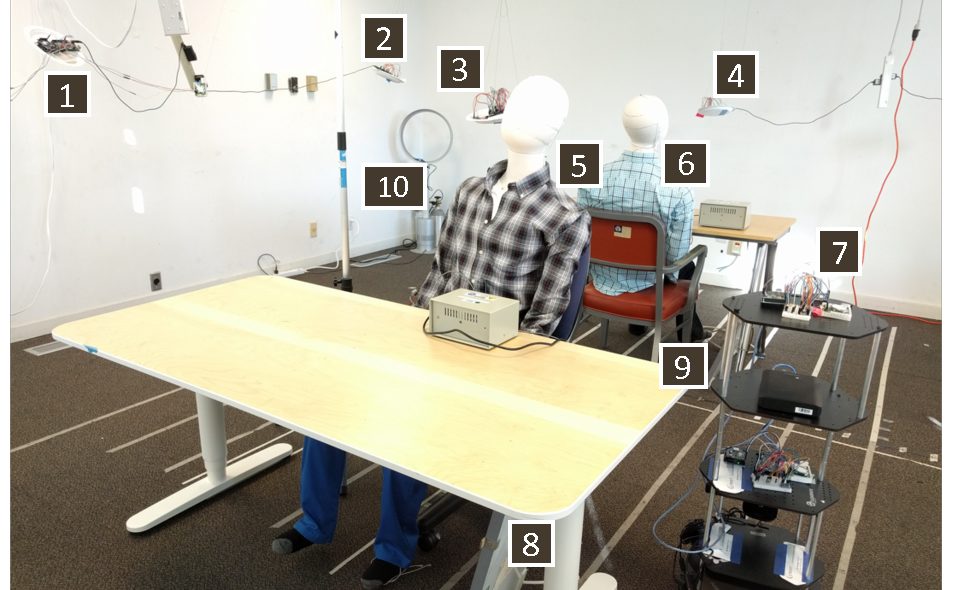Paper: Promoting collaborative learning in architectural engineering design through multi-user augmented reality

In the architecture, engineering, and construction (AEC) world, good teamwork is key to finishing projects on time and with high quality. That’s why collaborative learning is important in undergraduate education. Augmented reality (AR) technology, which has advanced quickly in recent years, merges the real world with virtual environments. In our study, we created a design […]
Indoor Environmental Quality Affects Occupants’ Cognitive Functions

Paper published in Building and Environment The Coronavirus pandemic reshapes occupants’ life since the lockdown of the city for decreasing the virus spread. In order to decrease the spread of COVID-19, people need to practice social distancing, avoid crowds, and stay at home, which increases occupants much more time in the indoor environment. Though this may be […]
Using wearable sensors to detect thermal preference in the field

Paper published in Building and Environment Again, we are experiencing another hot summer this year. Temperature neared 110 °F in many cities of U.S. and Europe in July. Your building managers turned down the thermostat, city managers set up misters, and your friend handed you a cold beer from the fridge. All looked natural and […]
Best paper award by Building and Environment Journal

Our paper titled “Automated mobile sensing: Towards high-granularity agile indoor environmental quality monitoring” (link) published in Building and Environment has won the Best Paper Award 2018 among the 3000 submissions. Check more details here. Congratulations!
New paper: Particle swarm optimization method to identify particle sources

Feng, Q., Cai, H., Li, F., Liu, X., Liu, S. and Xu, J., 2019. An improved particle swarm optimization method for locating time-varying indoor particle sources. Building and Environment, 147, pp.146-157 (link). Title: An improved particle swarm optimization method for locating time-varying indoor particle sources Summary: The indoor transmission of airborne particles can spread disease and have […]
New paper: CFD airflow simulation of a ceiling fan

Energy constraints encourage the use of energy-effective electrical appliances such as ceiling fans to achieve indoor thermal comfort, especially in developing countries (e.g., China and India) and regions with mild and warm climates. Ceiling fans accounted for approximately 6% of residential electricity consumption in India in 2000, which might increase to 9% in 2020. To […]
New paper: robot sensing for indoor environmental quality

Do you have a robot vacuum cleaner in your house? Have you thought that such a tiny robot may be upgraded to measure and map indoor environment quality (e.g., temperature, pollutants)? Our team recently embedded a few environmental quality sensors on an open-source robot and developed algorithms to make the robot “smarter” for indoor air […]
New paper: air change effectiveness at heating mode

Hot air does not want to come down just because it can float above the cold one. We published an experimental study on how to improve air change effectiveness of over-head mixing ventilation operating at heating conditions. When warm supplied air is delivered at the ceiling level, buoyancy force prevents fresh air circulated throughout […]
New paper: Indoor Environmental Quality Monitoring by Autonomous Mobile Sensing

The paper has been accepted to ACM Buildsys 2017. Indoor climate monitoring is crucial for building agility, enabling indoor environmental quality (IEQ) assessment, occupancy-based climate control, and context-aware services. While instrumenting the space with low-cost sensors like temperature, humidity, and light level, is a viable option, it is not scalable for expensive sensors like carbon […]
New paper: Ceiling fan air speeds around desks and office partitions

It is the first work to evaluate the effects of tables and workstation partitions on a room’s generic air flow and comfort profiles. Check more details about the study (here). Background: Ceiling fans may cool room occupants very efficiently, but the air speeds experienced in the occupied zone are inherently non-uniform. Designers should be aware of […]

You must be logged in to post a comment.